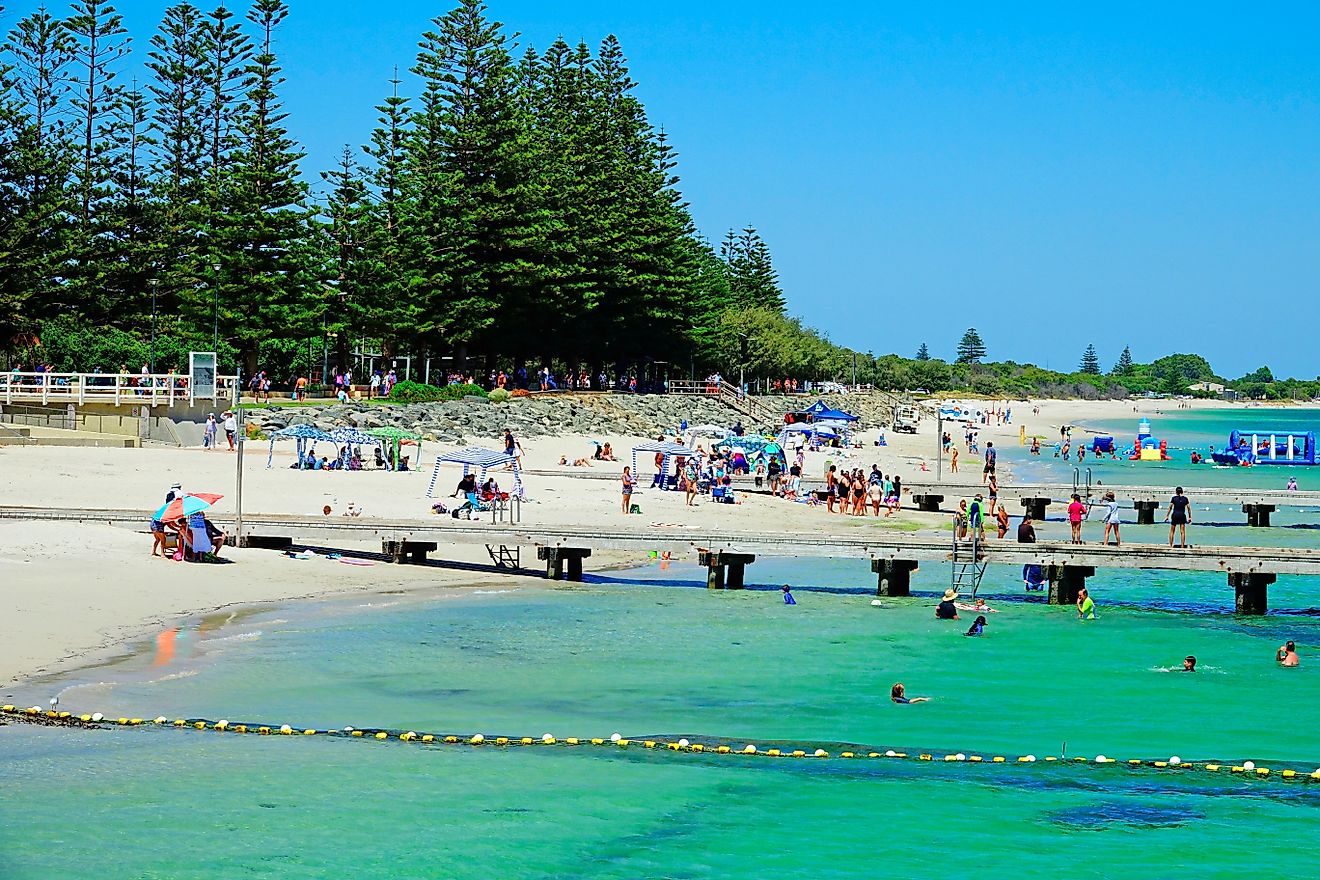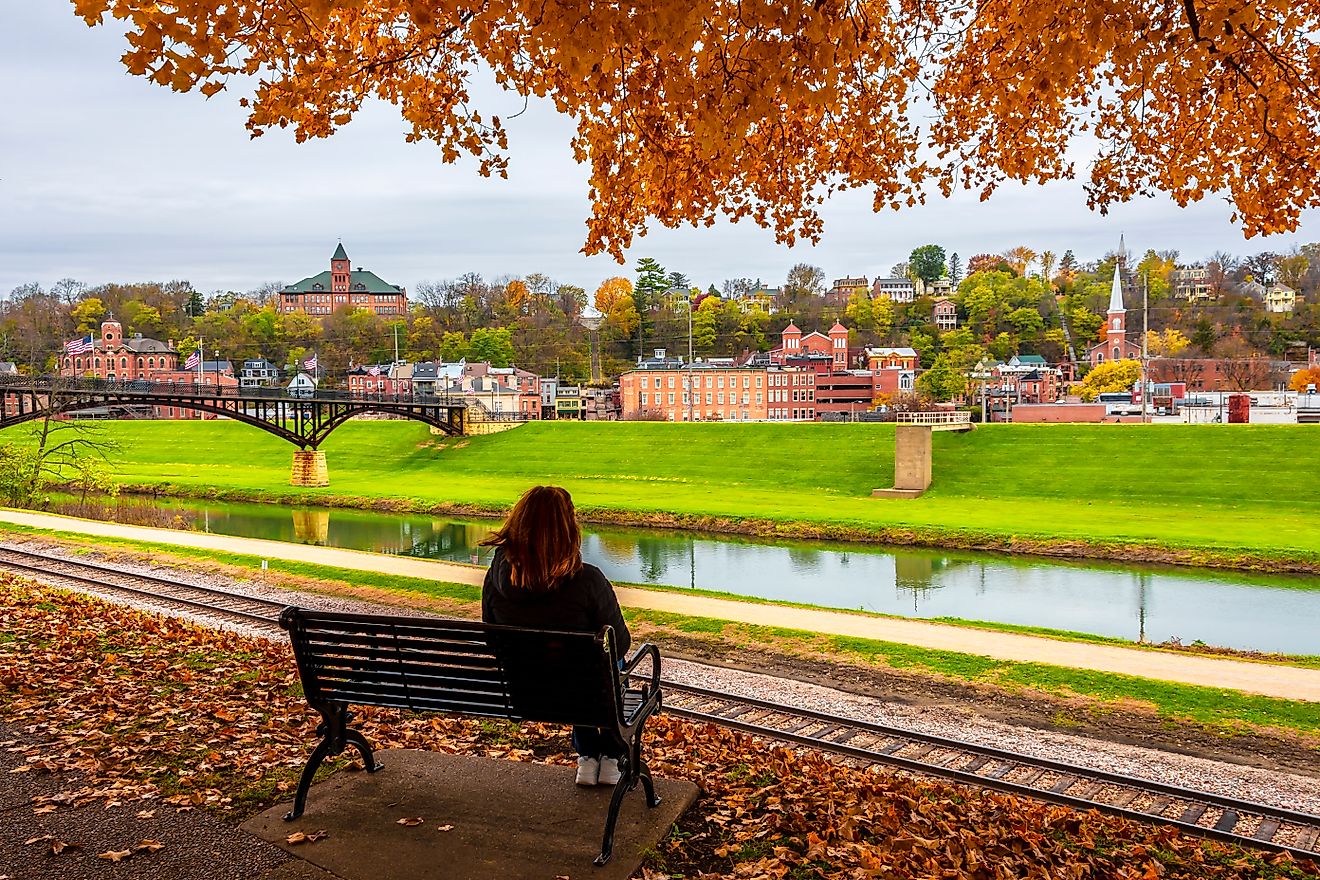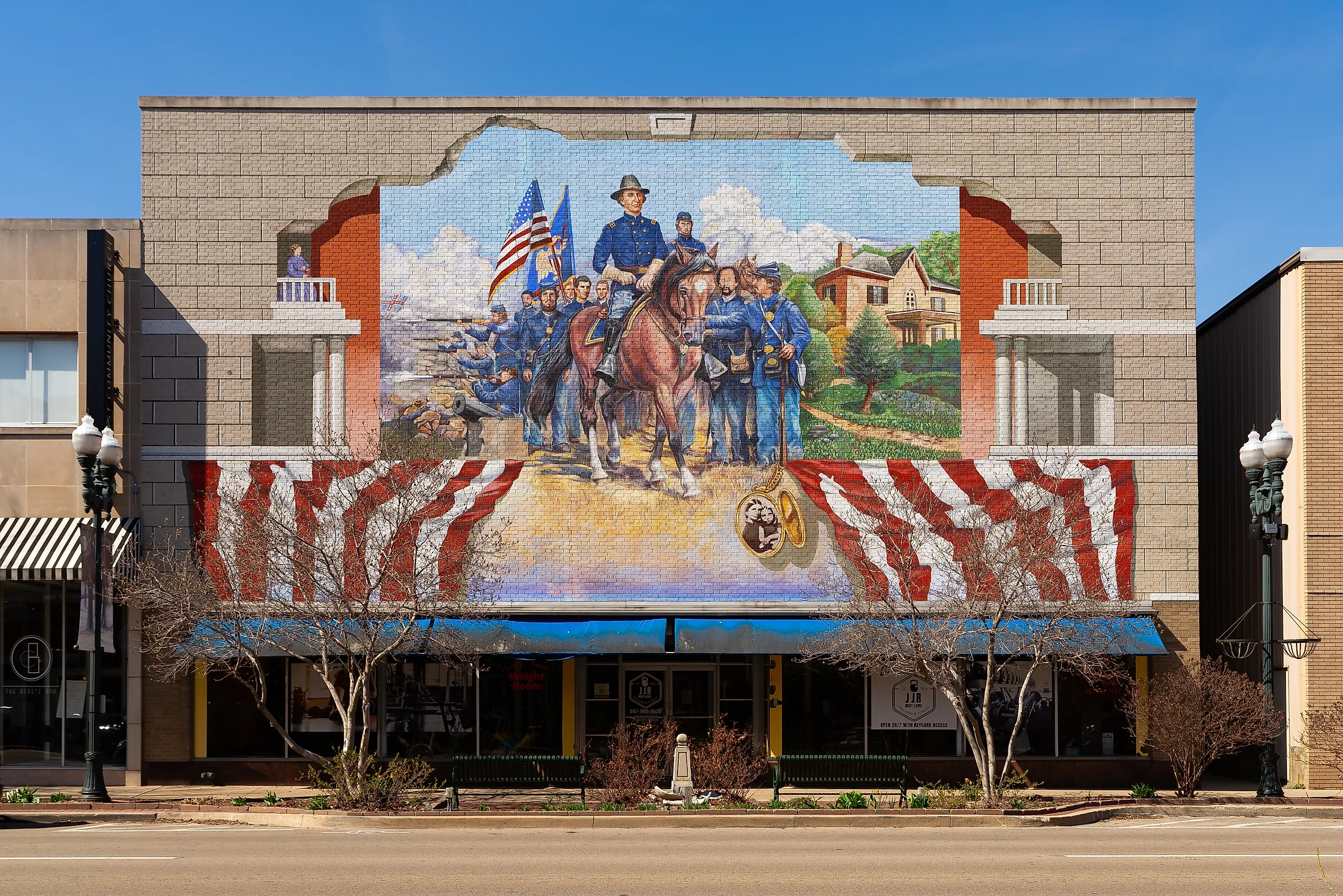
10 Illinois Towns That Echo The Past
Illinois keeps its ledger in stone, water, and work. From river bluffs and canal locks to courthouse greens and colony commons, these towns show how function became heritage and how daily life turned into record.
Illinois is also louder than it looks. Listen closely, and a map appears in sound: a handset clicking in a depot telegraph room, a hymn in Swedish drifting across a commons, and a courthouse bell marking the hour as if the docket still matters.
This list follows the noise. The route moves through rail yards with a Pullman sleeper on display, windmill sails that still turn, and cafés embedded in century-old storefronts where the ceiling tin remains unpainted. Ten towns, each with a distinct signal, prove that Illinois keeps time in gears and footsteps rather than slogans.
Alton
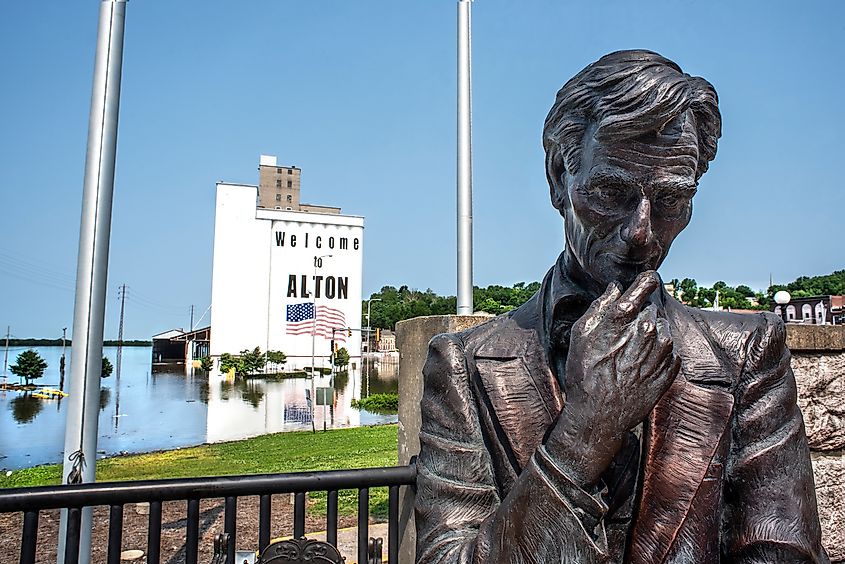
Alton sits on a bluff above the Mississippi River, where the past is embedded not just in architecture but in story. The town once held the largest population of enslaved people in Illinois, later becoming a vital stop on the Underground Railroad. Its limestone hills are layered with tunnels, legends, and the site of the final Lincoln-Douglas debate. Elijah Lovejoy, the abolitionist printer, was murdered here by a pro-slavery mob, his monument in the upper cemetery stands over 100 feet tall.
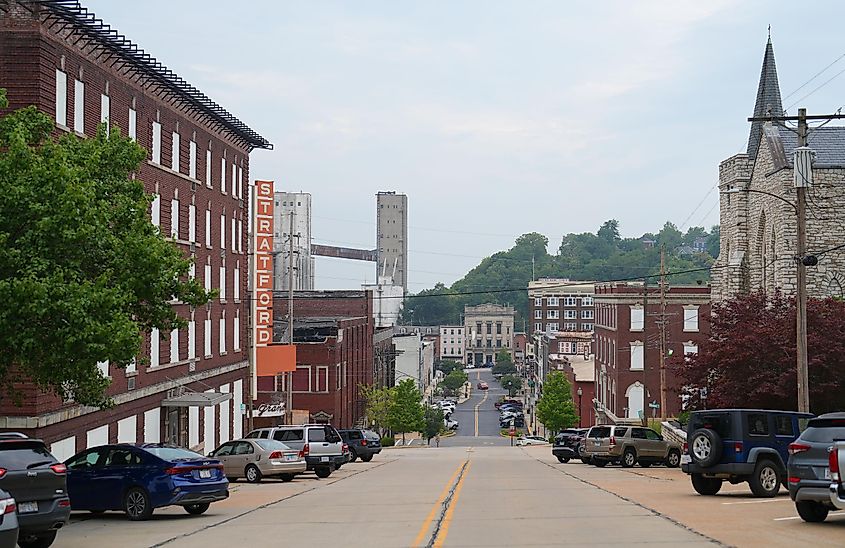
The McPike Mansion, abandoned, partially restored, and surrounded by overgrowth, is open for flashlight tours, with or without paranormal claims. On the riverfront, the National Great Rivers Museum traces the history of lock-and-dam engineering, and nearby, the Clark Bridge frames sunset views toward Missouri. For a meal, My Just Desserts on Broadway serves homemade pies inside a century-old storefront with visible rafters and salvaged church pews.
Lockport
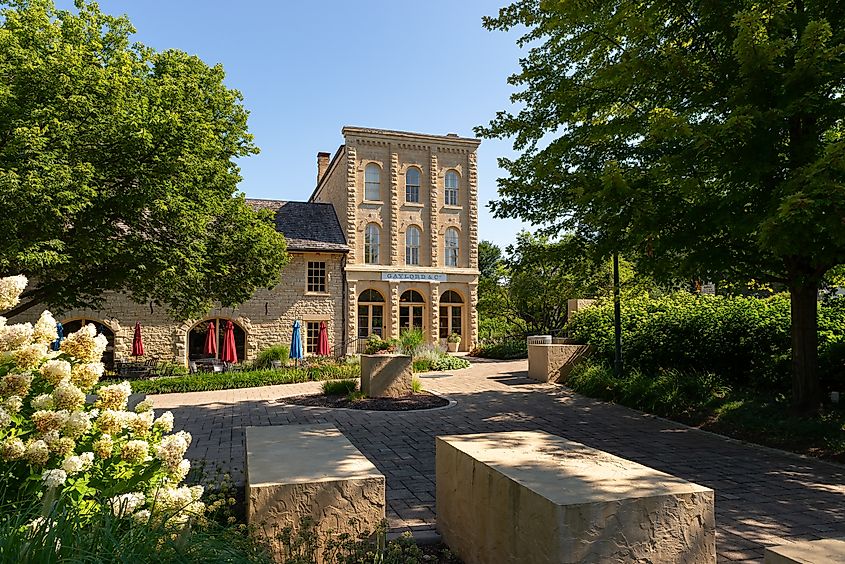
Lockport’s identity is carved into stone, literally. The town served as the administrative center of the Illinois & Michigan Canal, and its original Canal Headquarters, built in 1837, still stands on 9th Street. Many early buildings were constructed from locally quarried Joliet limestone, a material so durable it was later used for the Chicago Water Tower. What sets Lockport apart is how intact its canal-era industrial core remains. The town was engineered for freight and function, and the bones of that purpose are still visible in its street grid and facades.
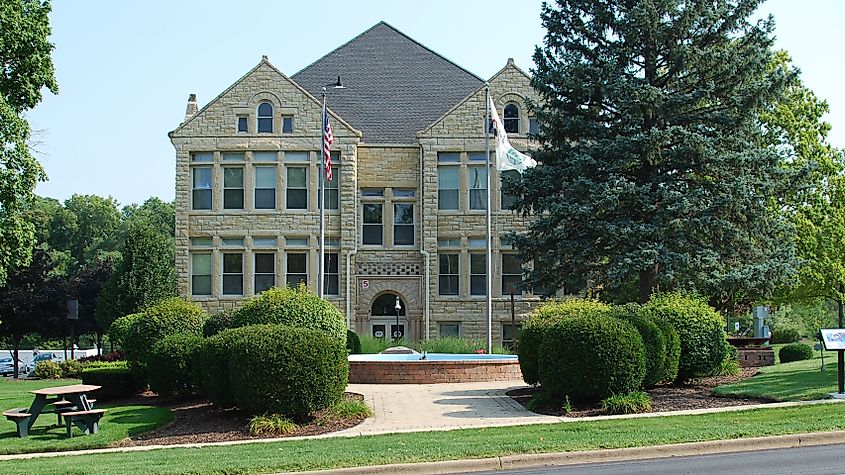
The Gaylord Building, a three-story canal warehouse from 1838, now houses The Public Landing restaurant and a satellite museum space run by the National Trust. Nearby, the Norton Building, once a grain-processing facility, contains the Illinois State Museum’s Lockport Gallery, which hosts exhibitions on regional industry and design. Ember's Tap House occupies a former firehouse and retains its original hose tower and stonework, offering small-batch beer under vaulted ceilings. The I&M Canal Trail cuts directly through town alongside the original canal walls and rusting lock gates, ideal for walking past overgrown machinery and stonework foundations.
Bishop Hill
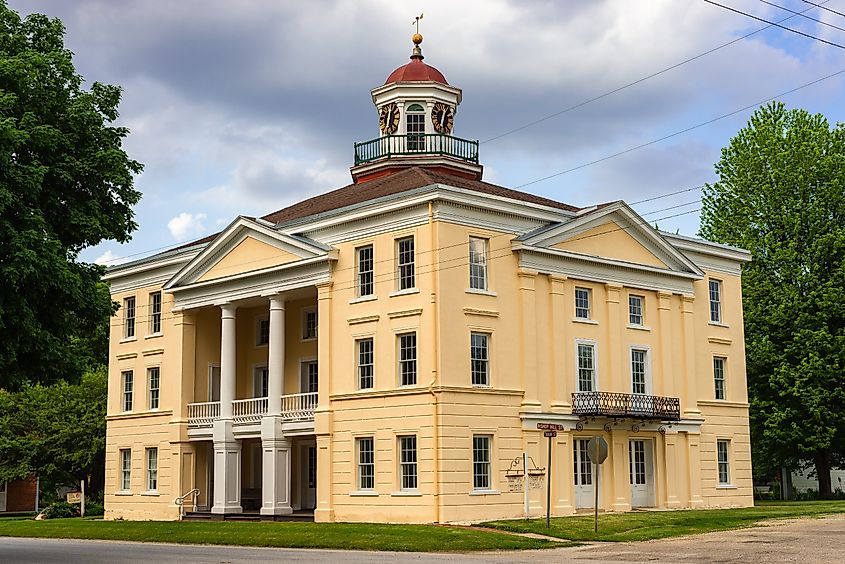
Bishop Hill began as a Swedish utopian colony in 1846, founded by religious dissidents following Eric Jansson. What sets the town apart is its preserved layout, communal in design and still anchored by the Colony Church, a stark brick structure built by hand. Nearly two centuries later, Bishop Hill remains a functioning village, not just a museum. Many of its original buildings, like the 1854 Steeple Building and the Colony Store, are still in use, not reconstructions. The streets are wide because the founders planned to farm communally, and the village green was designed to hold gatherings of the faithful.
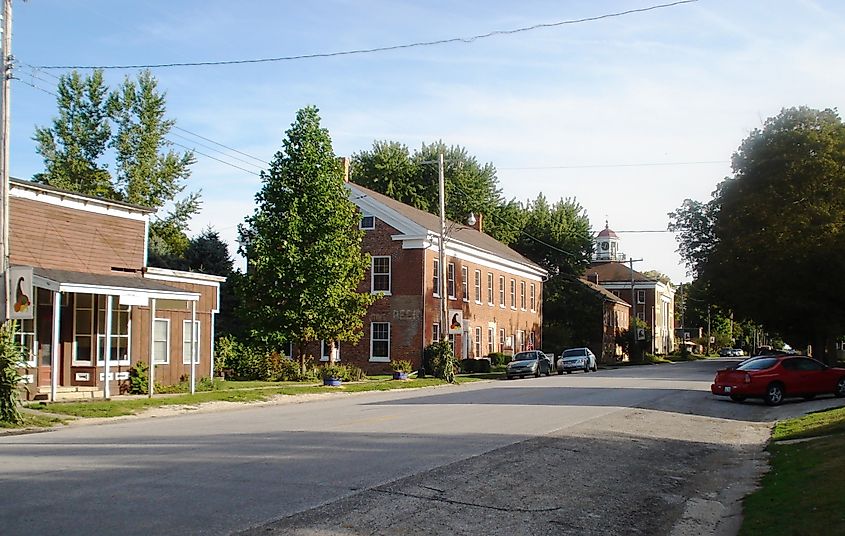
The Bishop Hill State Historic Site includes several original colony structures, including the Bjorklund Hotel and the Dairy Building, where oxen once turned massive butter churns. The Hantverk Galleri sells contemporary Swedish-American artwork inside an old colony barn with hand-hewn beams. At The Filling Station, a small cafe in a converted service garage, locals gather for open-faced sandwiches and black coffee. P.L. Johnson's Dining Room serves Swedish meatballs and lingonberry pie in a parlor lined with pressed tin ceilings.
Galesburg

Galesburg was founded by abolitionists, and that foundation remains visible in both its institutions and landscape. The town was home to one of the original Lincoln-Douglas debates, held in 1858 on the lawn of Knox College, where the original Old Main building still stands with its bell tower and wooden windows intact. Galesburg also served as a major rail hub, at one point the CB&Q yards here were among the largest in the Midwest. Carl Sandburg was born in a small cottage just off East Third Street, and his legacy permeates local schools, parks, and plaques.
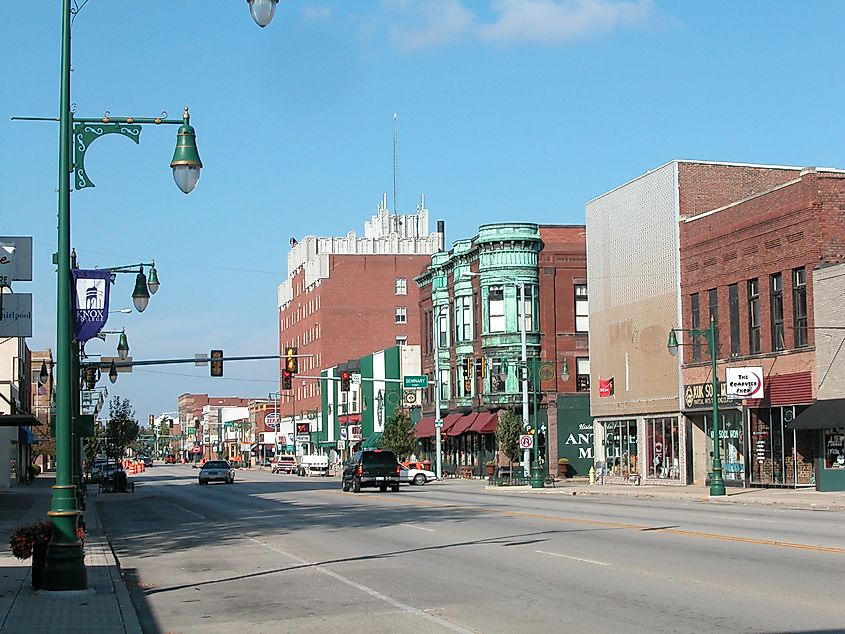
The Carl Sandburg State Historic Site includes the poet’s two-room birthplace, shaded by walnut trees and surrounded by heirloom roses. The Seminary Street Historic District contains 19th-century storefronts, iron balconies, and bricked sidewalks; within it, Innkeeper’s Coffee serves black walnut lattes beside display cases of old rail menus and porcelain cups. The Galesburg Railroad Museum houses a restored Pullman sleeper car, a working switchboard, and a telegraph station behind the still-active Amtrak line. Across town, Landmark Café and Creperie, located in a converted 1880s livery stable, serves buckwheat crepes beneath exposed rafters.
Monticello
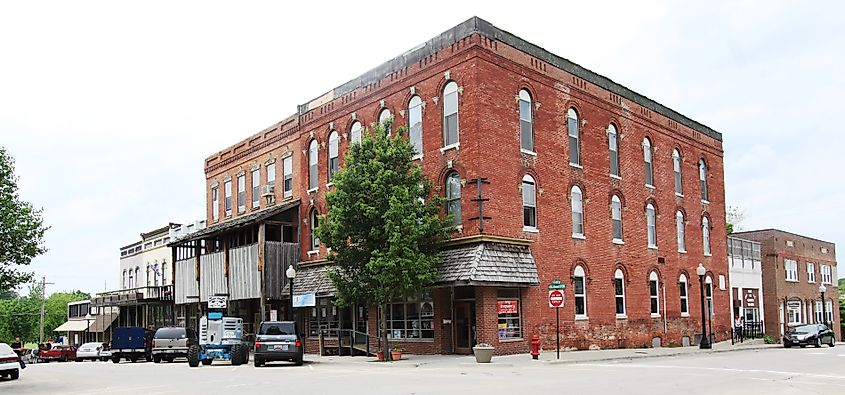
Monticello retains its original courthouse square layout, with a street grid that wraps around the Piatt County Courthouse like rings on a wheel. The town was built with rail in mind, its 19th-century depot still stands, and tracks curve directly into the center of town. What sets Monticello apart is the Allerton estate, gifted to the University of Illinois in the 1940s, where classical sculpture, a Georgian-style mansion, and formal gardens lie in the middle of downstate prairie. The juxtaposition is deliberate. Robert Allerton meant to bring European order to American farmland.
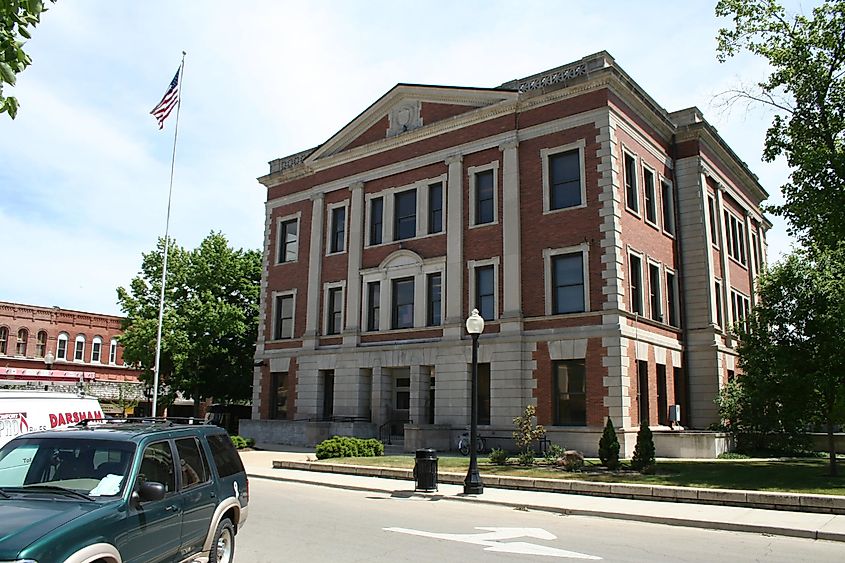
The Monticello Railway Museum maintains a fleet of diesel locomotives and restored passenger cars, some of which still run weekend excursions through cornfields and across wooden trestles. Downtown, the Brown Bag serves pulled pork on pretzel buns inside a brick storefront with original ceiling tiles. Prairie Fire Glass, located just off the square, offers live glassblowing sessions and sells hand-pulled vases and ornaments. Allerton Park remains the largest draw, its Fu Dog Garden, Sunken Garden, and mansion corridors are accessible year-round, surrounded by pine groves and hedge mazes.
Ottawa
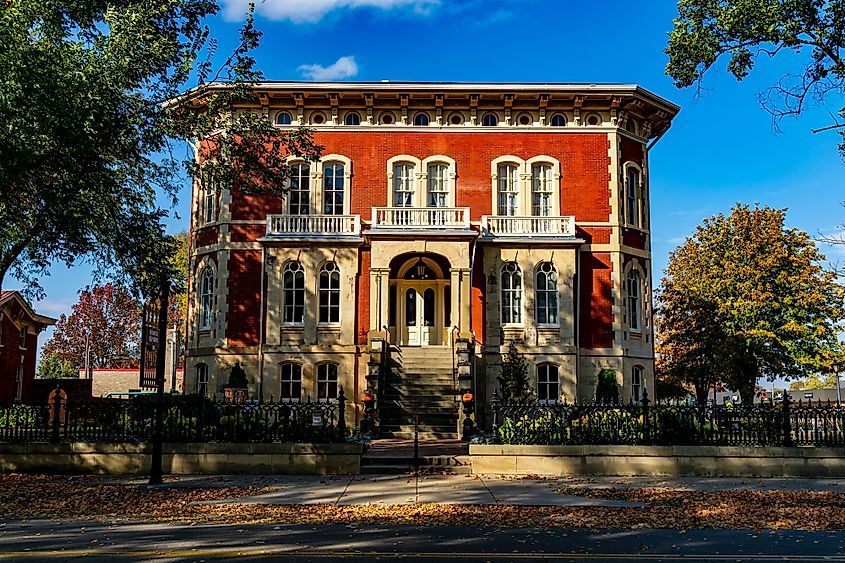
Ottawa holds its place in Illinois history as the site of the first Lincoln-Douglas debate in 1858, staged before thousands in Washington Square. That original park still occupies the heart of downtown, framed by cast-iron fences, gas lamps, and an octagonal bandstand. The town also sits where the Fox and Illinois Rivers meet, which made it a natural hub for both canal transport and westward migration. Early abolitionist leaders like Benjamin Lundy and Alonzo Delano passed through or settled here, tying Ottawa to anti-slavery activism before the Civil War.
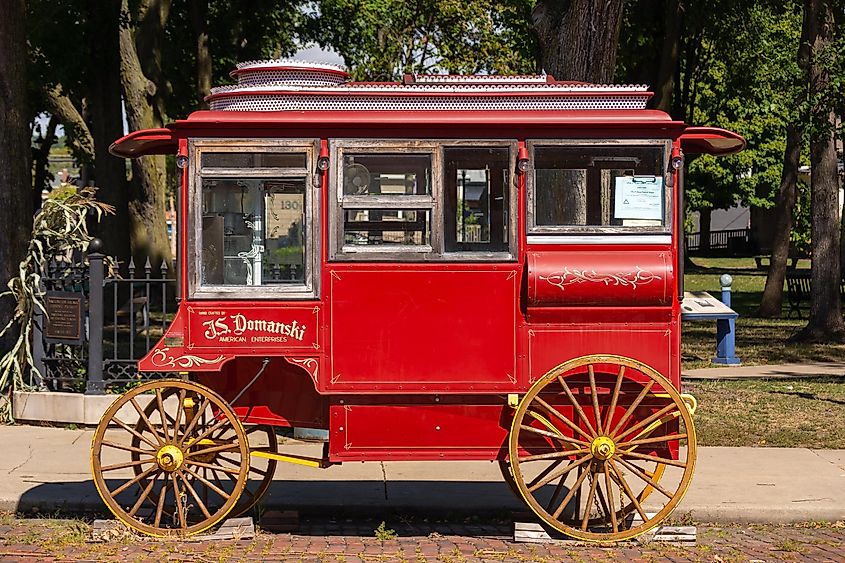
The Reddick Mansion, across from Washington Square, is a 22-room Italianate home with a rooftop belvedere and floor-to-ceiling walnut doors, open for guided tours. At Jeremiah Joe Coffee on LaSalle St, regulars sit beneath pressed-tin ceilings and oversized maps of the I&M Canal. The Ottawa Historical and Scouting Heritage Museum includes artifacts from the canal’s construction era and one of the most complete Scouting collections in the Midwest. Allen Park, along the Illinois River, features WPA-era stonework, a stone pavilion, and views of barge traffic moving between Peoria and Chicago.
Galena
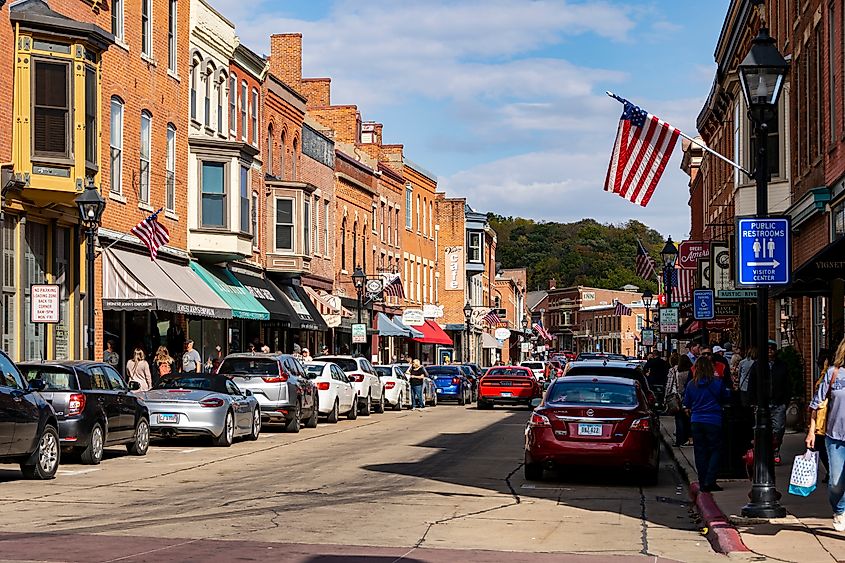
Galena was once more important than Chicago. In the 1850s, it shipped more lead than any other port on the Mississippi north of St. Louis. That wealth shows in its surviving architecture, over 85% of the buildings in Galena are on the National Register of Historic Places. What sets Galena apart is its topography: the downtown sits in a valley surrounded by bluffs, preserving a steep, tiered look unchanged since the 19th century. The homes of steamboat captains, merchants, and one Civil War general rise in layers above the old commercial strip.
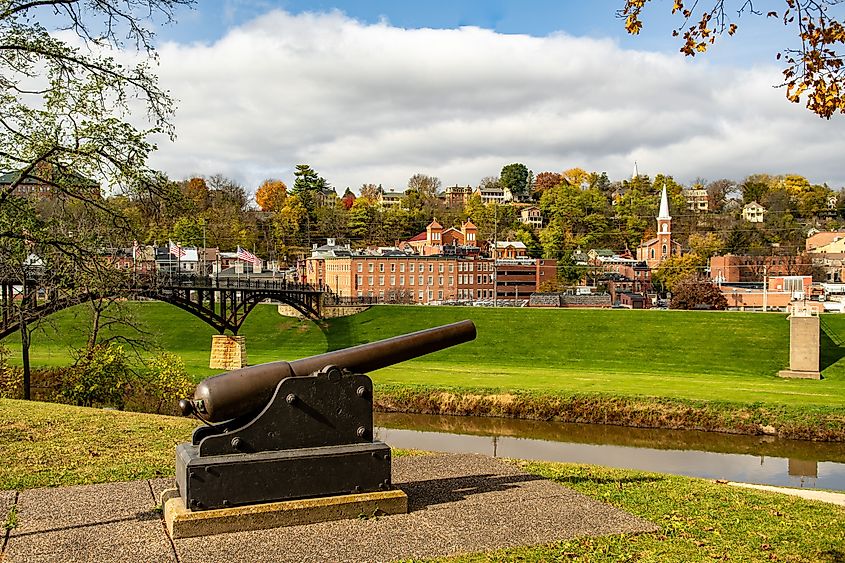
The Ulysses S. Grant Home, a brick Italianate structure on Bouthillier Street, has been preserved with original furnishings and overlooks the city from a ridge. Main Street curves along the riverbank with buildings like the DeSoto House Hotel, where Lincoln once spoke from the balcony. Otto’s Place, just across the tracks, serves breakfast inside a two-story Victorian with arched windows and ironwork trim. The Galena History Museum inside the 1858 Daniel Barrows Mansion includes lead mining artifacts, vintage firearms, and a panoramic scale model of the town as it appeared during its river-port peak.
Nauvoo
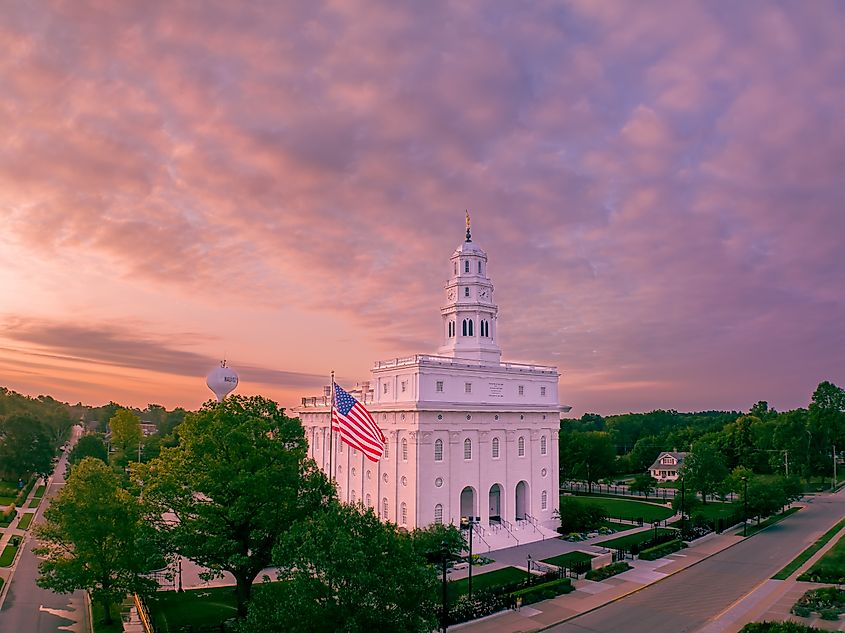
Nauvoo began as a frontier religious settlement and quickly became one of the largest cities in Illinois by 1845, built almost entirely by Latter-day Saints under the direction of Joseph Smith. What sets Nauvoo apart is that nearly the entire city was evacuated within a decade, leaving behind a grid of streets and stone foundations that were later restored based on original plats. The town functions as a working reconstruction of a vanished community, with blacksmith shops, brick homes, and cooperages staffed by missionaries or interpreters in plain clothing. The Nauvoo Temple, rebuilt in 2002 using archival drawings, dominates the bluff above the Mississippi.
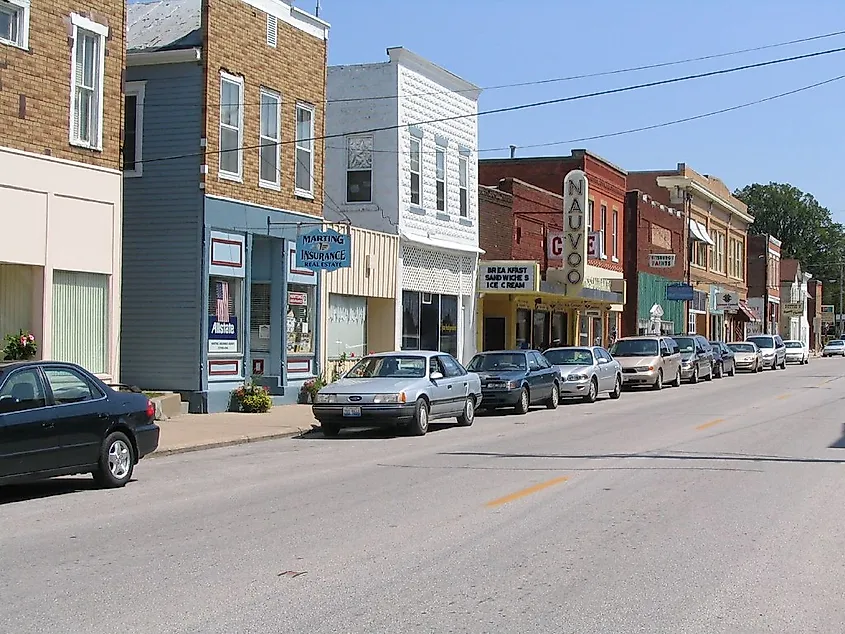
The Historic Nauvoo Visitors’ Center on Parley Street offers maps, guided access to 30 restored structures, and insight into the mass exodus west along the Trail of Hope. The Family Living Center demonstrates weaving, barrel-making, and candle dipping with tools modeled on 1840s designs. Baxter’s Vineyards, the state’s oldest winery, has operated in Nauvoo since 1857 and offers dry reds grown on-site. At Hotel Nauvoo’s buffet, dinner is served beneath a pressed-tin ceiling in what was once a 19th-century boarding house for immigrants from Europe.
Geneva
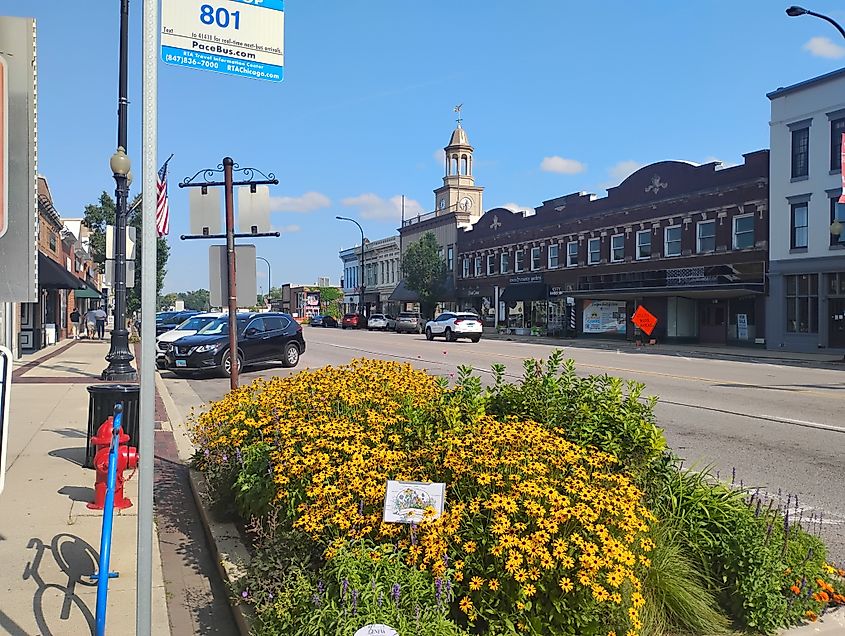
Geneva developed along the Fox River with a core shaped by Swedish immigration, water-powered industry, and rail access. What distinguishes Geneva is its balance of preservation and utility: 19th-century homes and storefronts remain in use, not just staged. Third Street follows the original commercial path and includes several brick and clapboard buildings that once housed cobblers, watchmakers, and apothecaries. The streets still hold the scale of a mill town, and the river still drives the rhythm of downtown.
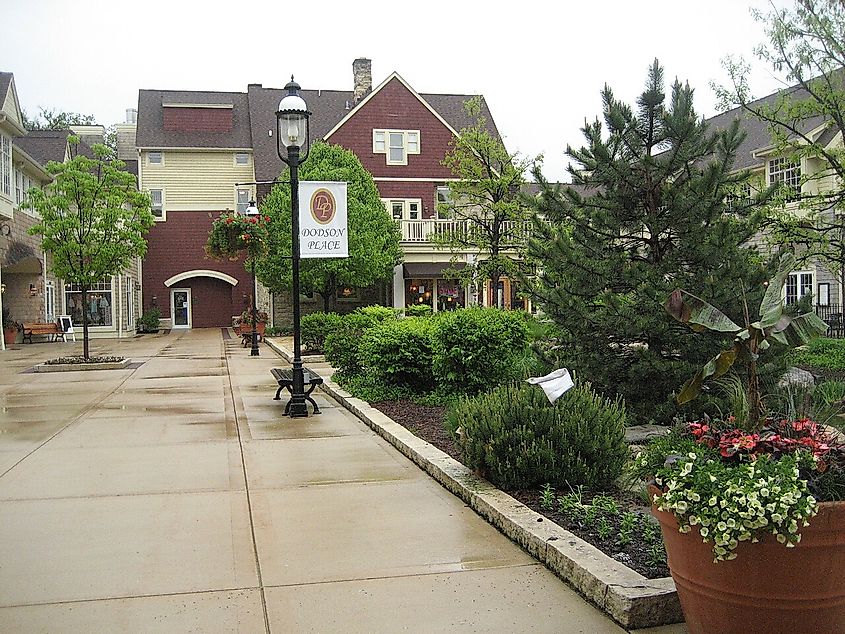
The Fabyan Windmill, relocated from Elmhurst, sits on a rise just outside town, fully operational and maintained by the Forest Preserve, its interior open for guided tours. Across the river, the Fabyan Villa Museum, once a country home redesigned by Frank Lloyd Wright, contains Japanese prints, cloisonné, and a restored dining room with built-in seating. Graham’s Fine Chocolates & Ice Cream, a café and chocolate shop on South Third Street, serves drinking chocolate and espresso in a former dry goods store. The Geneva History Museum houses a model of the town as it appeared in 1900 and preserves the story of Kate Raftery, a teacher who opened Geneva’s first kindergarten.
Woodstock
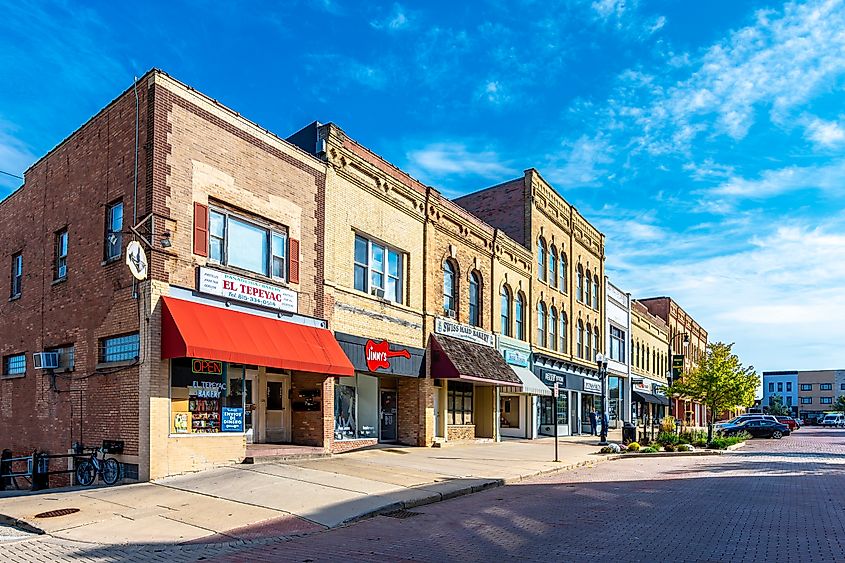
Woodstock’s defining feature is its preserved town square, a complete 19th-century commercial district still functioning around a central green. The Opera House, completed in 1889, anchors one corner and still hosts performances. Its original tower bell rings daily at 5 p.m. In 1992, the town doubled as Punxsutawney, Pennsylvania for the filming of Groundhog Day. The streets, diners, and alleyways seen in the film remain unchanged. But Woodstock’s historical weight precedes cinema. Eugene V. Debs served time here in the old county jail for labor activism, and the courthouse still stands across the lawn.
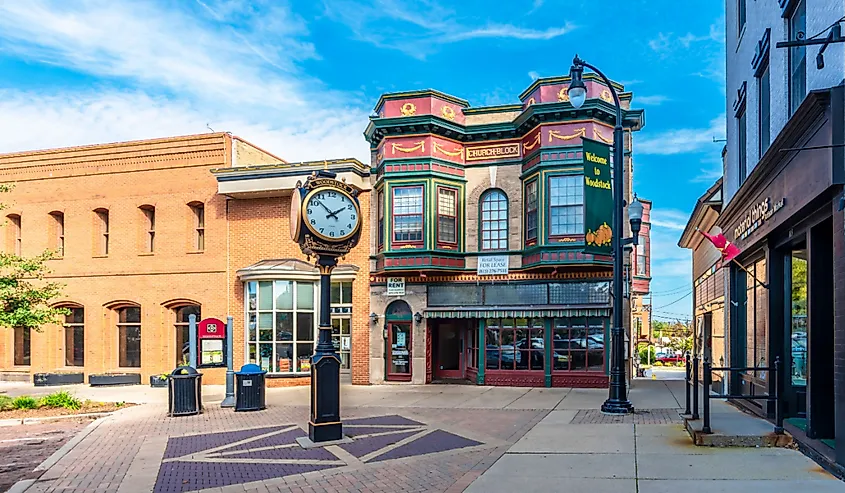
The Woodstock Opera House offers regular performances by Theatre 121 and Stage Left Café, located inside the same building, holds lectures and acoustic sets. The Old Courthouse Center, a converted 1857 building, houses rotating exhibits and the typewriter used in Groundhog Day’s script revisions. Ethereal Confections, on Benton Street, makes small-batch chocolate and operates a speakeasy-style cocktail bar on its second floor. The Woodstock Public Library includes WPA-era murals and original mission-style reading tables. Brick sidewalks, limestone lintels, and cast-iron lampposts remain intact.
Illinois keeps its ledger in stone, water, and work. From river bluffs and canal locks to courthouse greens and colony commons, these towns show how function became heritage and how daily life turned into record. Follow the towpath or rail spur, read names etched on plaques, and see industries that never shut down. The past is not staged here, it breathes through storefronts, bells, and bridges that still carry their load.
